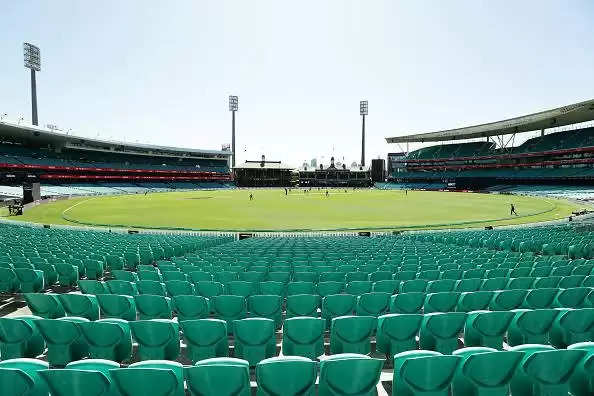Cricket’s new reality bubble a distant dream at non-elite levels

Sanitizing stations, hotels and training facilities on the ground, practicing with their own set of balls, restricting themselves within the same circle for the whole tour duration and possible quarantines before and after a series — the bio-secure environment England Cricket are planning to create for cricket to resume amidst the COVID-19 pandemic has been viewed with much interest.
It’s very likely the new reality in cricket for the foreseeable future. Daily temperature checks and minimising physical contact in the camp are all plans put in place for the players. The most concerning of them is perhaps the fact that the players who assemble on June 23 are likely to remain restricted to the premises of the one or two venues until the end of the Pakistan series which is around late August. That’s a huge commitment requirement from a large group of players but it is likely the new normal in cricket at elite levels at least.

Tom Harrison, ECB’s chief executive, critical to the whole planning, had explained as revealed by ESPNCricinfo that steps are being taken to ensure the environment is safe enough. “We’re making sure the levels we put in place are medically and government supported. But there’s a huge cost implication around creating the [bio-secure] environment.”
The cost factor is important because you could end up compensating for lack of cricket by creating a near impermeable environment. But if one case does shoot up from within the group, it seems unlikely that the series would go ahead, affecting the finances further. Rahul Dravid, in a recent webinar, questioned the feasibility of the ‘bio bubble’ – “In case of the bio-bubble, you do all the testing and quarantine and then on day two of the Test match, what if one player, for example, tests positive? What happens then?”
He does have a point. Contingency plans are in full swing by cricketing boards to make up for the losses they incurred during the pandemic. But does anyone really have an answer to what happens if their territory is breached by the deadly virus?
“What Rahul [Dravid] has said makes sense. Staying away for nine weeks, only meeting a certain group of people, only playing at a few venues, not going out at all. That’s too much restriction. It is difficult to do that long term. If you are staying so far for nine weeks [WI tour is for close to nine weeks], more than 2 months, that’s a long long time to be confined to one place. A domestic season lasts for such a long time. If you are confined for that long, it is unlikely to be a huge success. If it does happen, the players/officials and people involved will get frustrated too soon,” Wasim Jaffer says in an exclusive chat with the website.

Empty stadiums aside, domestic cricket has other financial and infrastructural struggles to put together cricket matches now
Even assuming the mental health of players and officials involved are kept in check, there are other challenges for consistent cricket to happen.
While the infrastructure and facilities are top-notch at elite levels of International cricket, the same can’t be said for domestic or Associate cricket where resuming the sport in a fool-proof, bio-secure environment is a distant dream considering the costs.
ALSO READ: Cricket’s return from COVID-19
“It will be trickier at Associate level. Obviously there’s a lot of money at stake when you put a series in place. Unfortunately, Associate teams don’t have that much funds in abundance. To go ahead with a series will definitely be trickier,” Kyle Coetzer, the Scotland captain and the Associate cricket representative in the ICC Cricket Committee, says in an exclusive interaction.
“I assume it is really hard for Associate teams to get any cricket in the near future. Possibly as it’s difficult to create a secure environment as they speak of among the top brand full member nations. On the flip side, the impact is to a bigger extent on the financial side to one of these bigger nations. In terms of playing and being out there, it’s impacting everyone but the full members are probably more likely to put something in place soon,” Coetzer adds.
England, South Africa, India, Pakistan, West Indies, Sri Lanka and Australia are planning on resuming cricket already with talks going on about the manner in which it can be done. As Harrison explained, the costs incurred to setup a safe environment is huge. Add in players, officials, ground staff and others and their safety and you have 200-odd individuals managed and monitored on a daily basis for nine-ten weeks. This seems impractical at lower levels of cricket at least where facilities, infrastructure and everything else are far from elite, even in a country like England.

Wasim Jaffer – “In England, especially in county cricket, the dressing rooms are small.”
In England, especially in county cricket, the dressing rooms are small. And then 11-15 odd players seated in them..if someone gets positive, there’s a major risk for players and their families. And it isn’t just saliva that transmits, the risk is anyway present when you play in a team sport. If it even starts as a single case, the risk is huge in a large circle that includes families of players. We will have to wait and see. I don’t see it happening at domestic level, especially in India. Any way the season is closed now with the monsoons coming. By July-August, we usually see some tournaments start off. We will have to take a call then,” Wasim Jaffer chips in.
As Harrison himself says, putting things together at domestic level involves further deliberation and discussion.
“With the domestic game there is another layer of complexity to consider as that is where you’re in the multiple team environment. So there’s definitely much more work required [on] how we understand a Blast schedule behind closed doors. Work is ongoing. It’s nowhere near finished yet.”

Kyle Coetzer – “A career with an associate team isn’t always fruitful, but it’s rewarding in many ways”
For a lot of domestic and associate players, cricket is the sole source of income and although the earnings aren’t always rewarding enough, the players stick by for the love of the sport. A lengthy break like this digs a hole in their purses. As Coetzer says, there’s a non-financial reward that these players find more fulfilling.
“It is a huge loss. Life plays its part. It’s a hugely saddening time. People have to earn a living. Fortunately we get to do it this way. It comes with its challenges. A career with an Associate member team in cricket isn’t the most fruitful. But it’s a very rewarding one when you see what you can do to development of the sport in the country. It is certainly less than ideal now. A lot of our players rely on cricket to make our earnings.”
It is this very passion for the sport they play that makes them train hard in times like this. Even when Cricket Scotland doesn’t have much say on the players or their routines, the skipper vouches for the fact that the players are putting in the hard yards to keep themselves up and running so they are ready when resuming cricket does become more of a reality for them.
“Players are trying to do what they can to maintain their own fitness. Just to give an example – Technically we are not working for Cricket Scotland. We are doing it probably because we are a bit bored. We are still doing our strength and conditioning. That’s down to us. Cricket Scotland has no involvement in how it works,” Coetzer says.
That’s all these players can do for now. Like their lives, their finances have also come to a grinding halt. They are pondering ways to resume playing the sport they love with Coetzer stressing that talks are going on between boards to decide how cricket can restart for them. This includes playing in bio-secure arenas too, but ultimately for them, it all comes down to the one question according to Coetzer – ‘Can you put this together with the finances in hand?’

More franchise cricket could be the new normal at non-elite levels
Franchise tournaments are more stable financially and given the number of leagues coming up, this could well become more rampant than International cricket outside the Big Three in the near future.
Even as cricket boards are in for a new normal – one that includes bio-bubbles, chartered flights and quarantining teams – the increasing costs of international cricket alongside the new requirements to adjust for player safety make shorter tours or bilaterals between two financially unstable nations near impossible.
This puts immense pressure financially on smaller nations as arranging bilaterals will be more difficult than before. Potentially, this could pull them more in a direction away from International cricket.
“Hopefully, lesser established franchise leagues are potential ways for players to maximise their earnings. They still have to be run appropriately and be safe in these times. But yes, the tournaments are longer, so it’s probably more feasible to implement measures than shorter bilaterals,” Coetzer says.
While juggling the pennies, these players can only hope that franchise leagues set up more secure environments and provide some financial stability to them.

